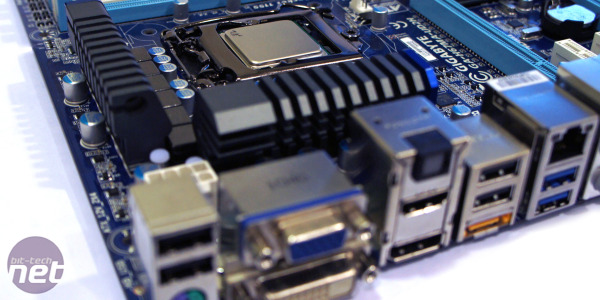
Intel HD Graphics 3000: Performance Analysis and Conclusion
Despite its 40 per cent higher price than the AMD machine, the Core-i5 2500K rig commands a clear advantage in terms of bangs for your buck. What's more, In just two CPU generations, Intel has effectively turned this market on its head, making the result even more significant.Only Minecraft yielded better performance from the Radeon HD 4250 in the 880G chipset, although the Intel HD Graphics 3000 system also offered playable frame rates in this game. Unfortunately, though, we occasionally found that the 'Normal' render setting was a still step too far for both machines, which is a bit disappointing.
It's also worth noting that this market win is partly due to the fact Nvidia is no longer in the chipset business, and AMD hasn't significantly updated its IGP technology since it launched the 780G almost three years ago. Even the premium 890GX chipset still only uses the same basic set of 16 stream processors.
That said, AMD has yet to play all its Fusion cards this year. The company's Llano APU, which looks set to arrive in the second quarter of this year, is rumoured to have 400 stream processors, which could seriously shake up the market.

You'll need an H67 board, such as this this Gigabyte H67A-UD2H, to use Sandy Bridge graphics, or wait for Z68-based boards in the second quarter of 2011. Click to enlarge
Another seriously limiting factor of Intel's new desktop CPUs is the fact that all but the K-series use the cut-down HD 2000 graphics, yet the H67 chipset, which is needed to use the IGP, doesn't allow you to overclock the K-series. Until Intel launches its still mysterious Z67 chipset in the second quarter of this year, which merges the H67 and P67, you'll be better off buying a cheaper LGA1155 CPU and opting for a discrete, low-profile graphics card.
We have no idea why Intel's HD Graphics 3000 hardware couldn't make it into all of its Sandy Bridge CPUs, especially when it's featured in all of the equivalent mobile chips. Intel has finally made an integrated graphics system that's good enough to kill off the budget PCI-E card market, and then it just gave its competitors a free pass.
Our other remaining chin scratch is driver support or, more specifically, driver updates. Intel is (in)famously poor when it comes to regular driver updates to fix or add performance enhancements to the latest games. Intel's defence has always been that its graphics hardware been about 'mainstream gaming.' We appreciate this, but that statement also gives Intel the liberty to determine what's considered mainstream, rather than what actual gamers enjoy. Will we see driver optimisations in the handling of Java code to get a performance boost in the million-selling Minecraft, for example, or is that considered too indie?
Let's also not forget OpenCL. We initially asked Intel about OpenCL support at the Clarkdale launch. The company said then it was aiming for mid-2010. As there's still no OpenCL support we asked again recently and were told:
'[Intel] will be releasing OpenCL graphics drivers to developers during the course of 2011. [Intel] continue to evaluate when and where OpenCL will intercept various products.'
In short, Intel has finally nailed its integrated graphics system on the hardware front, and its current drivers appear to work flawlessly, but the company still crucially lacks the whole package.

MSI MPG Velox 100R Chassis Review
October 14 2021 | 15:04








Want to comment? Please log in.